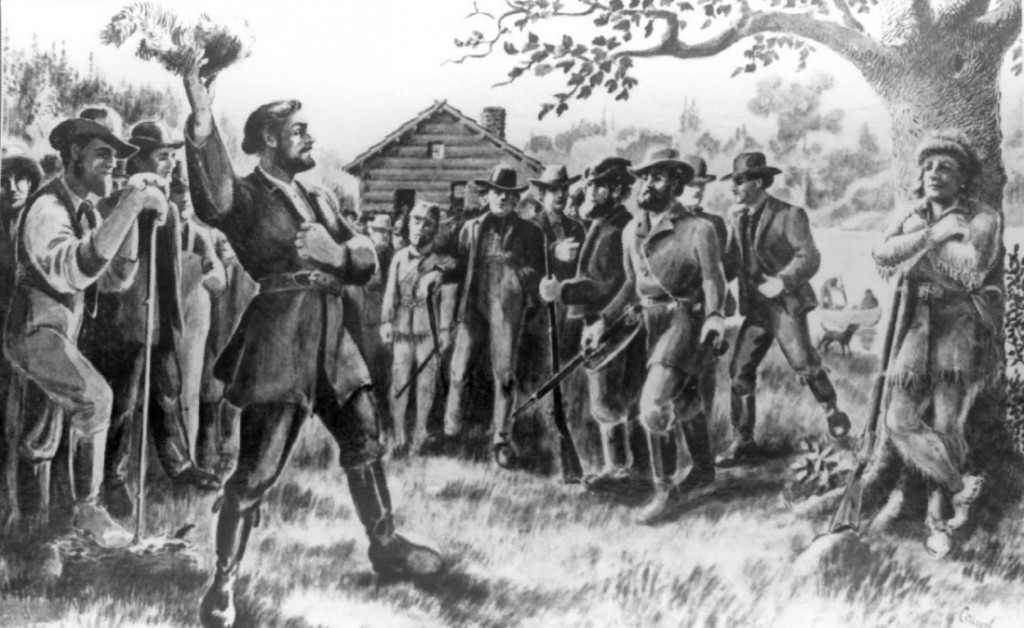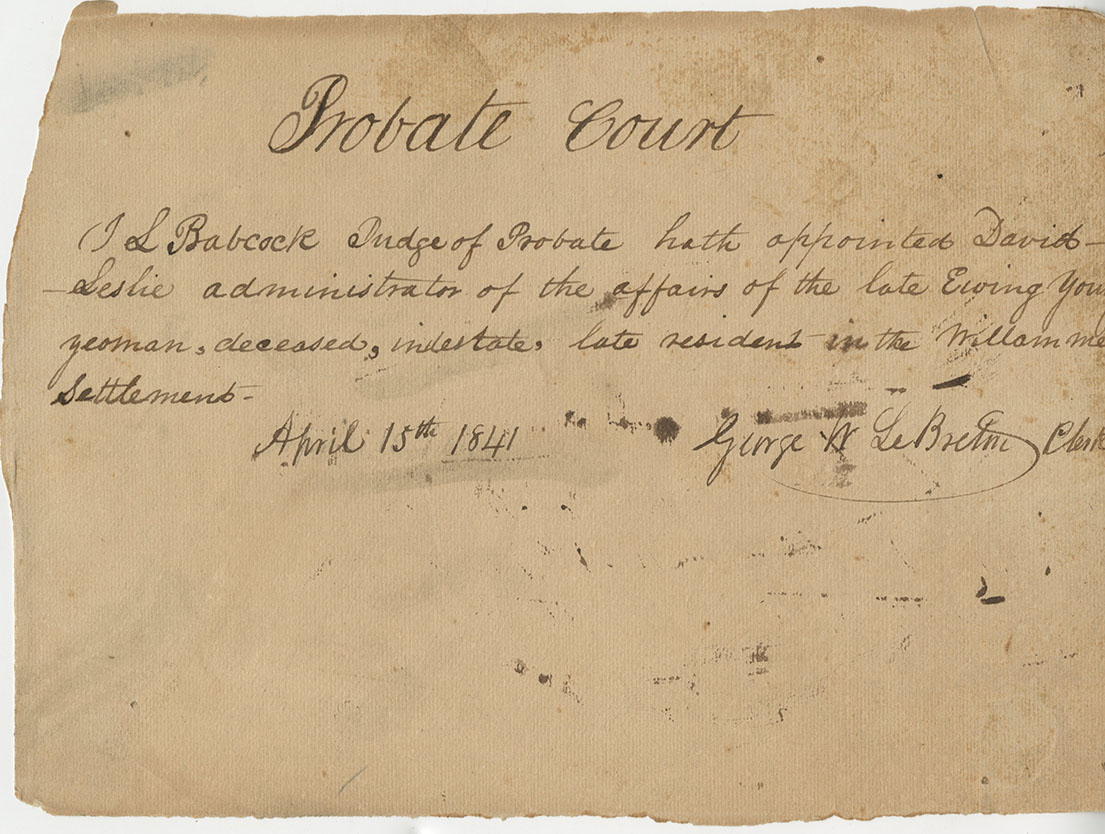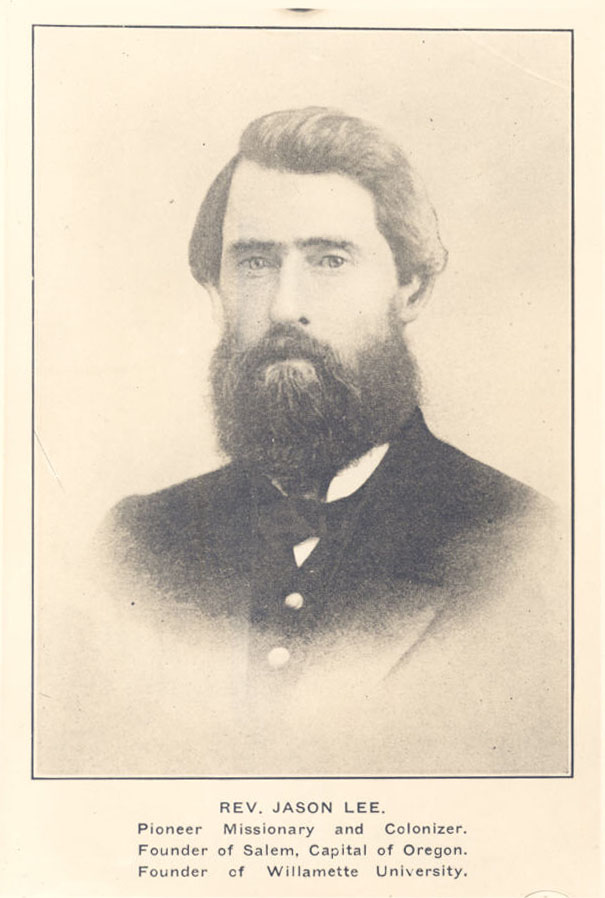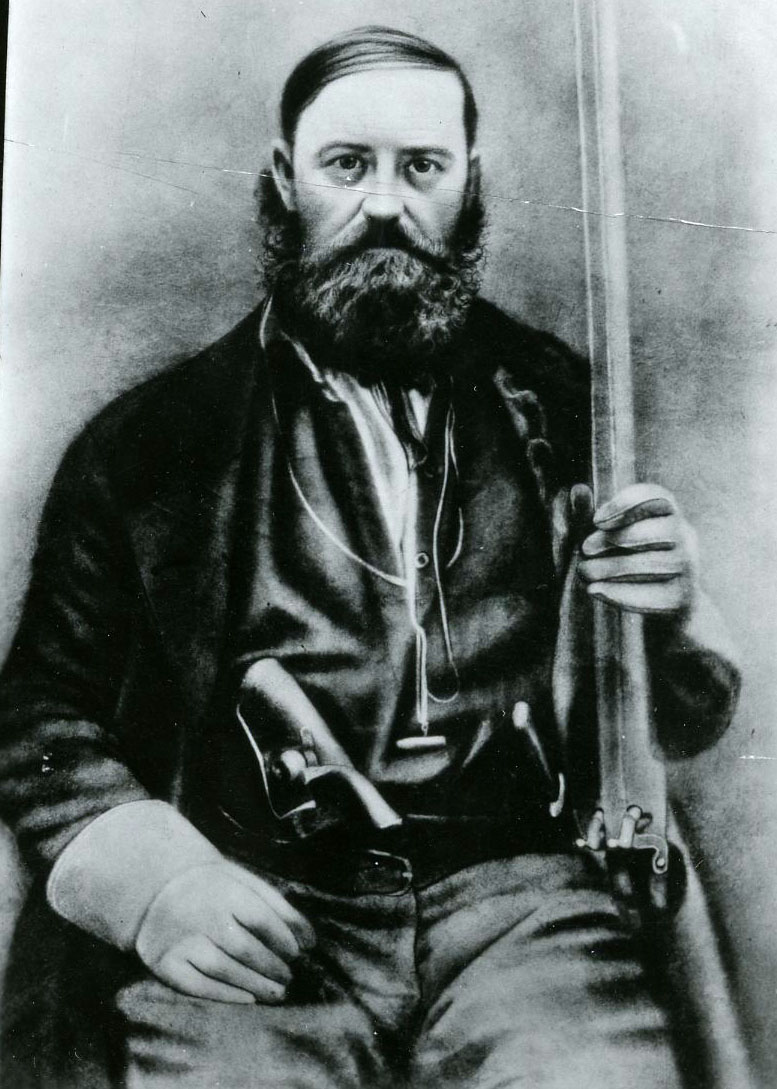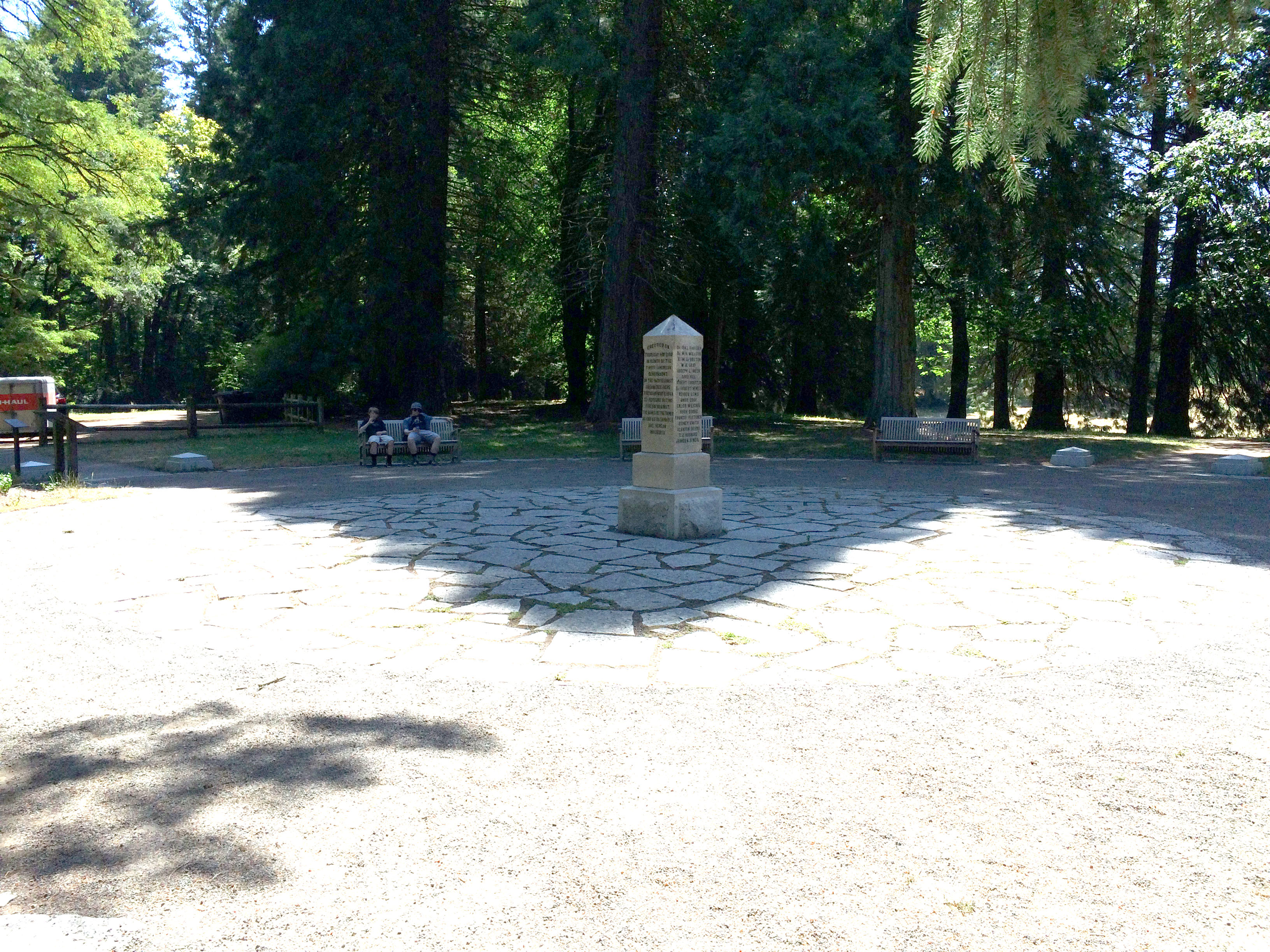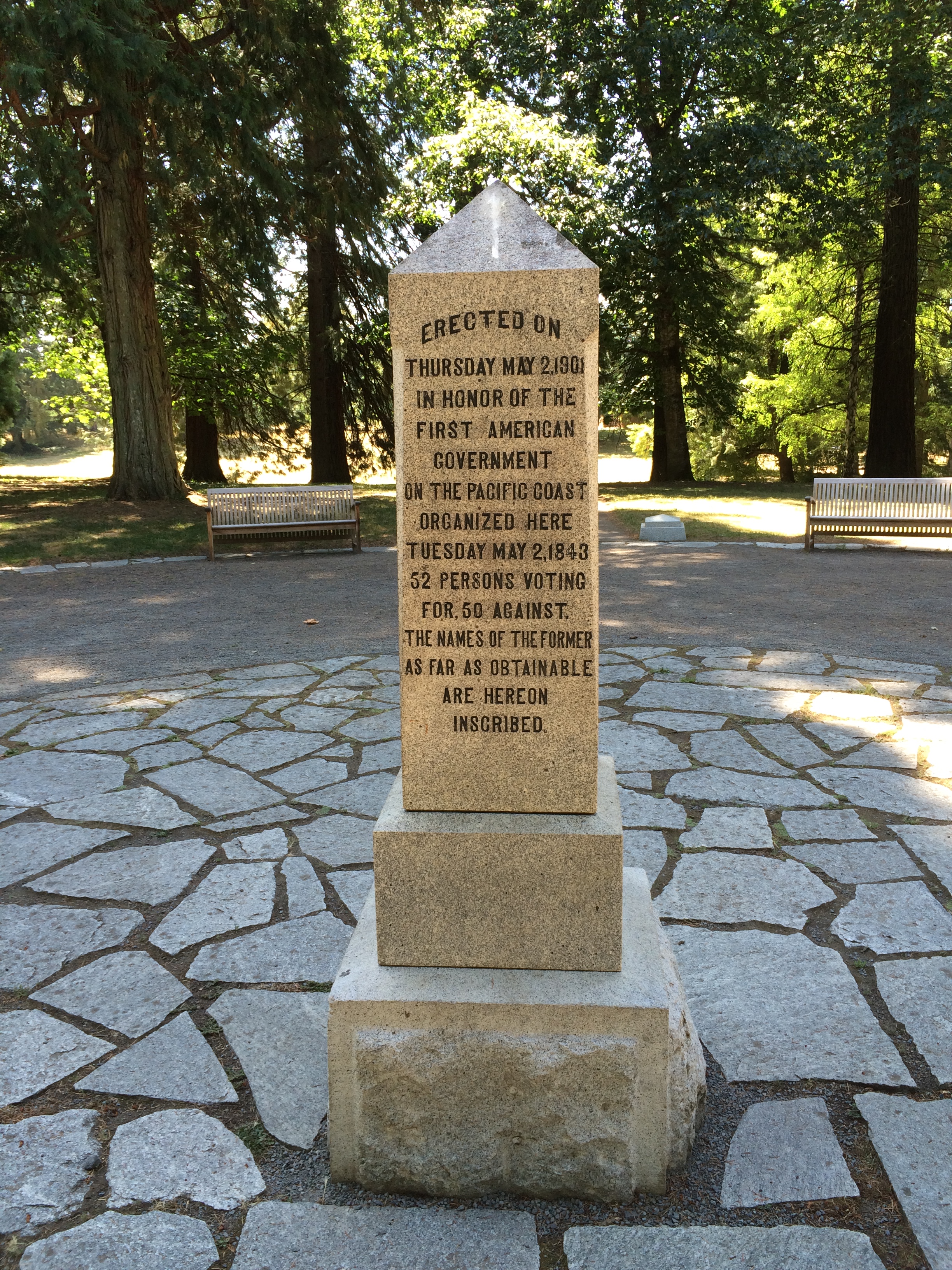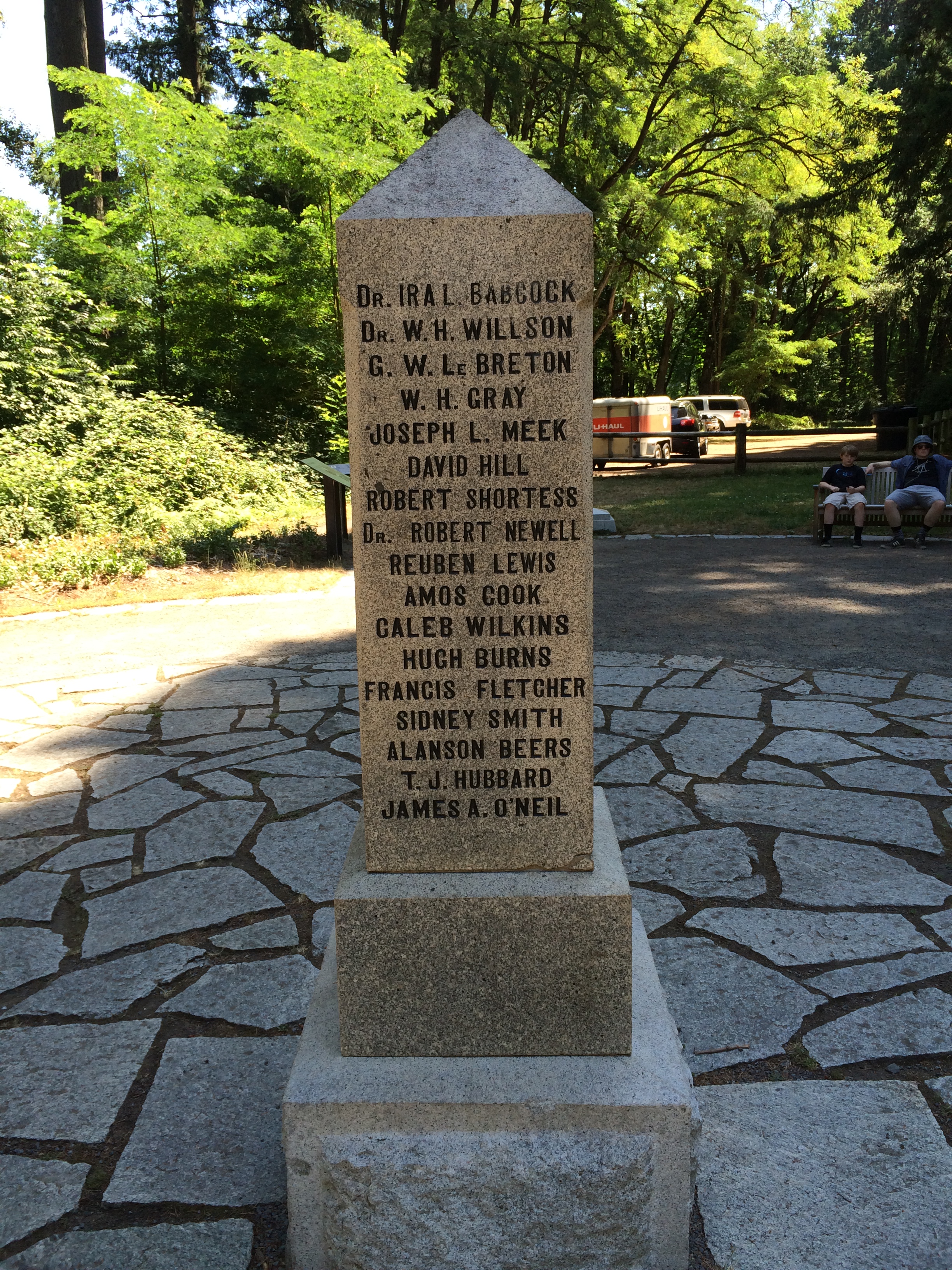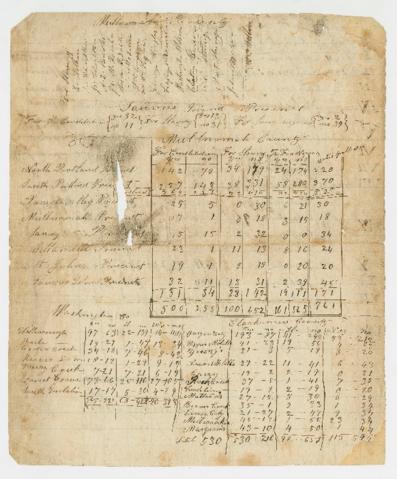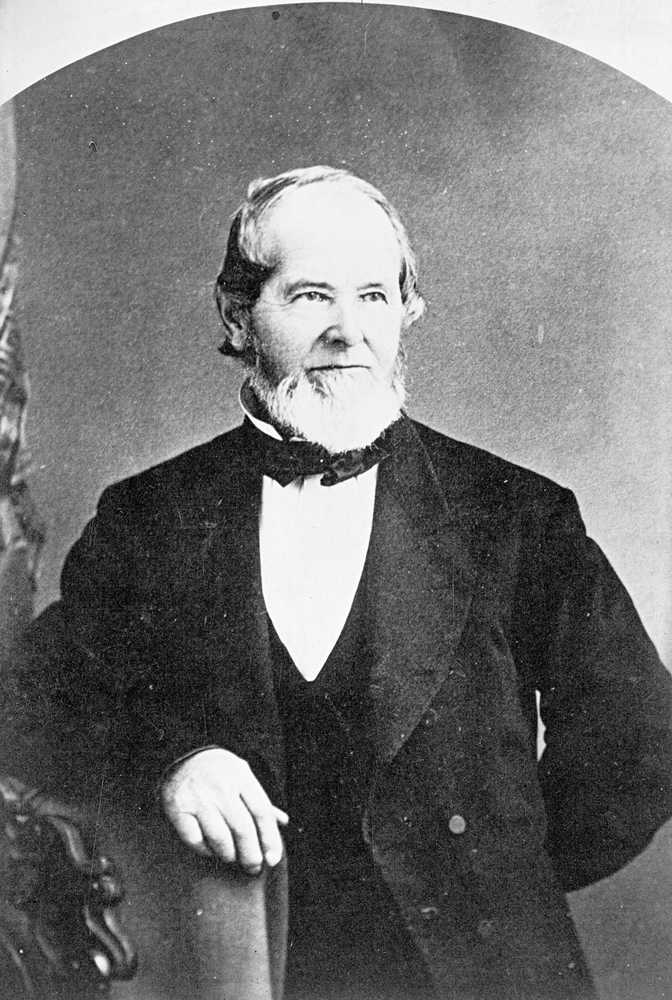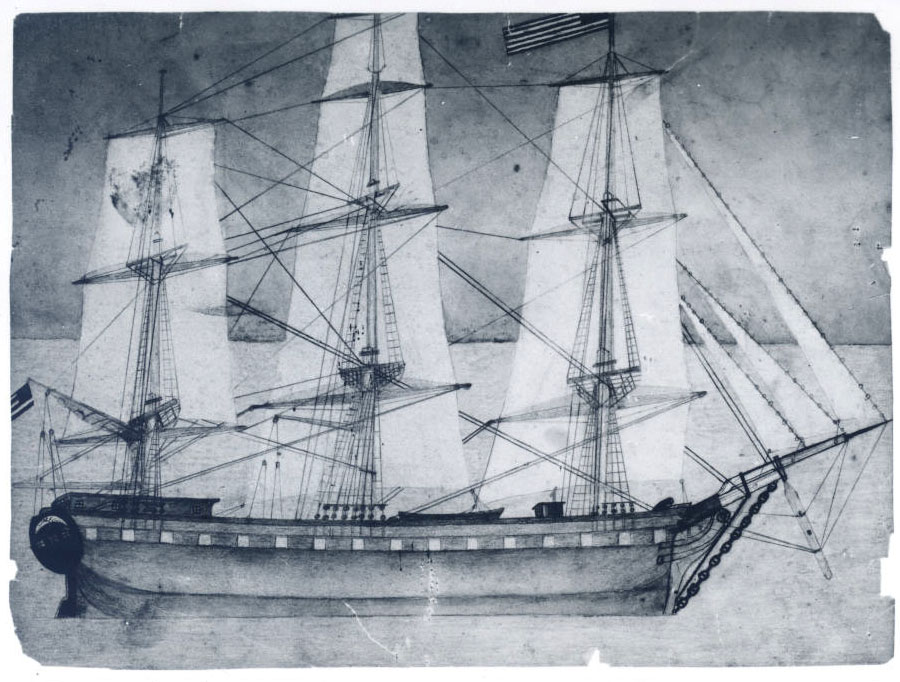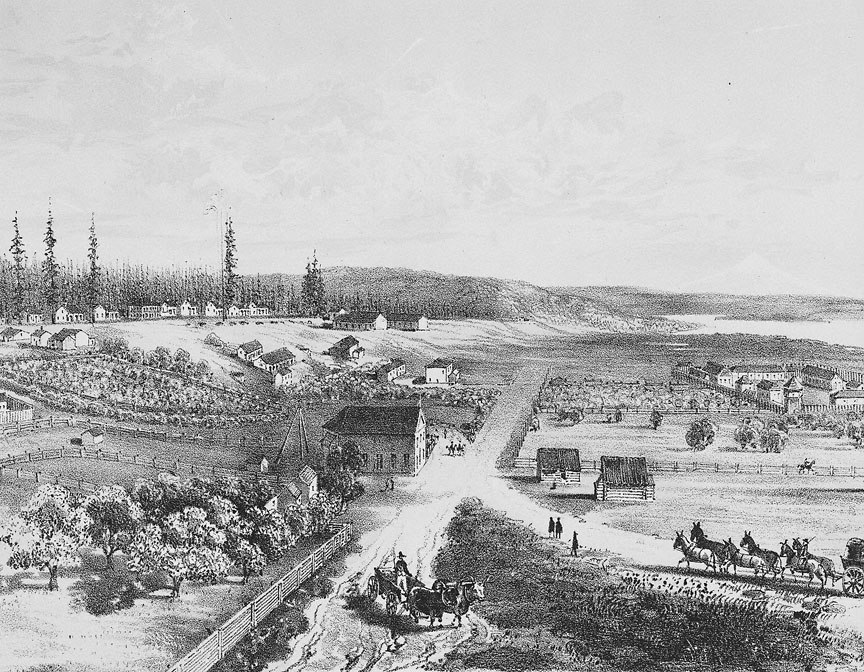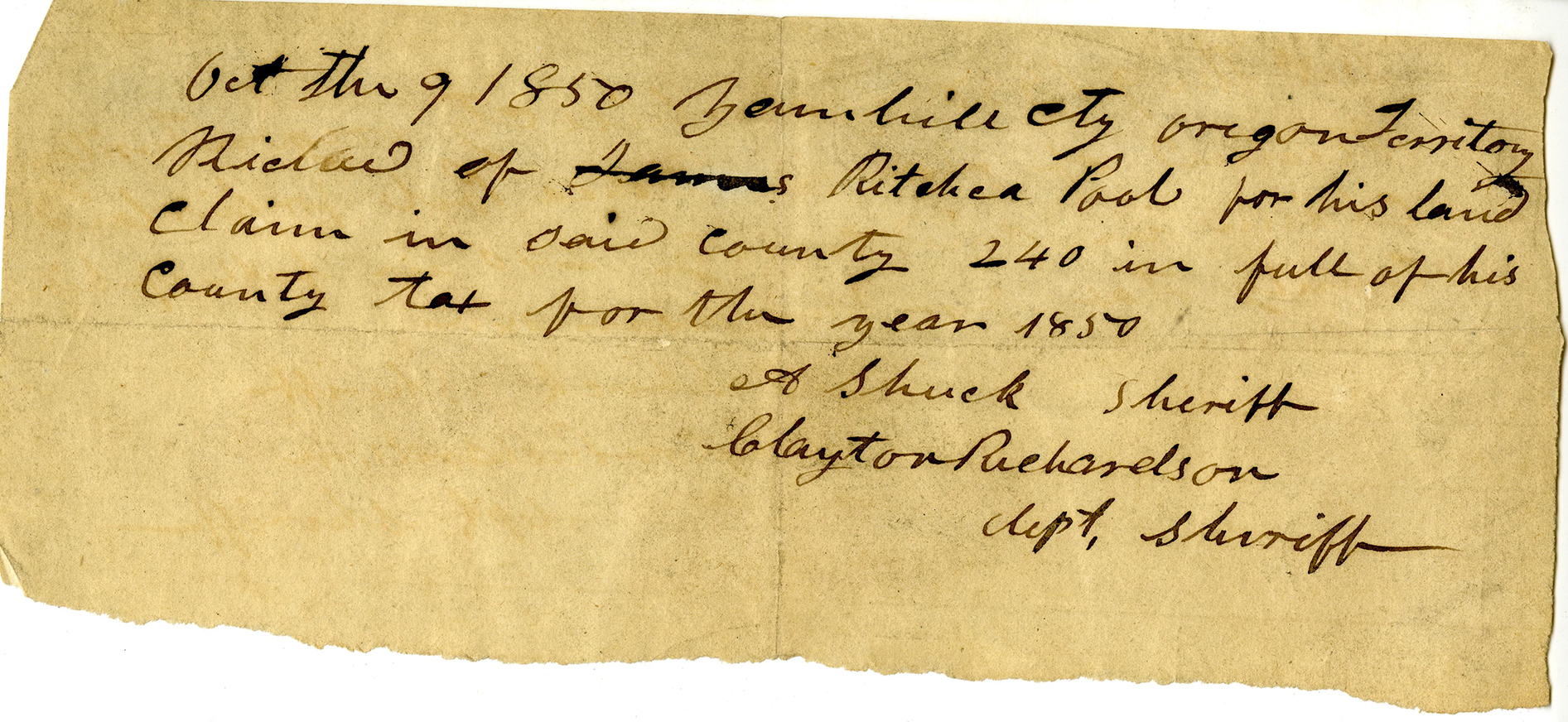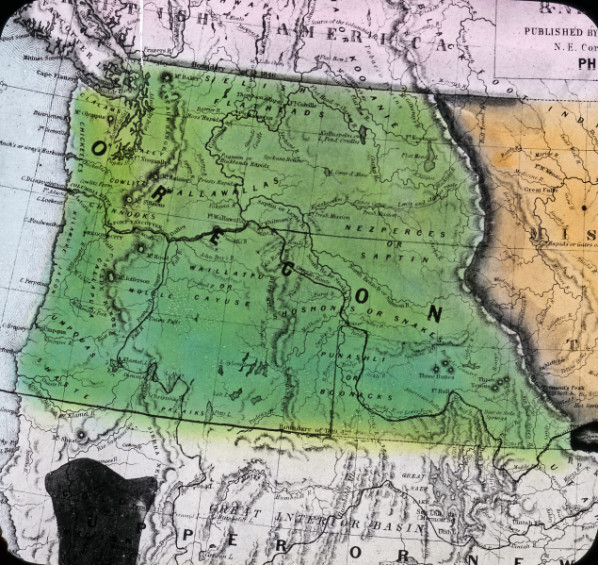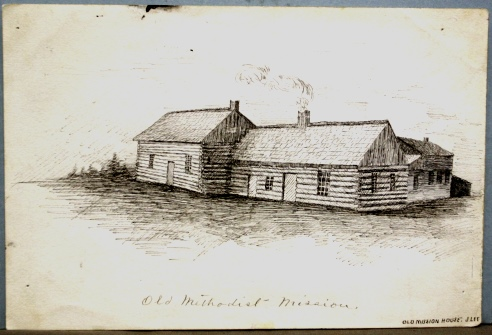The Provisional Government, created in May-July 1843, was the first governmental structure created by non-Natives on the Pacific Coast of North America. Launched in an effort to secure an American rule of law in the Oregon Country, the Provisional Government was formed at a time when the region was open to eventual control by either Great Britain or the United States through the London Convention Treaty of 1818. The agreement for “joint occupancy” forbade either nation from creating any administrative structure that implied sovereignty. In the absence of anything formal in the way of administration or defense, a group of resettlers decided to establish a government themselves.
The British had been attracted to the Oregon Country primarily because of its potential for a lucrative fur trade, while Americans were interested in the region primarily because of its agricultural promise. In 1825, the Hudson’s Bay Company sent John McLoughlin, head of the British company’s Columbia Department, to oversee the fur trade. While that was his focus, McLoughlin also encouraged the non-Native settlement of the Willamette Valley, and over time many of the trappers and other HBC employees, most of them French Canadians, settled out in the Willamette Valley and turned to farming.
In 1834, when American Jason Lee established a Methodist mission in the Willamette Valley, he found that disease had reduced the Native population. He believed that the presence of British and French Canadian farmers in the valley threatened American interests and began promoting American immigration. At his urging, a contingent of Americans known as the Great Reinforcement arrived by ship in 1840 and took up farming, but their primary purpose was to bolster the Methodist Mission. They were followed by others, known as the Mission Party, who would play an important political role in the region through the 1840s. In 1841, at the behest of the Mission Party, several meetings were held to write laws and choose officers to enforce them.
While resettlers found McLoughlin and the Hudson’s Bay Company to be helpful, Lee and others, who were in debt to the HBC and fearful of the economic power of the British, saw McLoughlin as an obstacle to American control of the region. In 1842, the British and French Canadian fur traders, who were members of the Pioneer Lyceum and Literary Club, called for the establishment of an independent government. The Americans, counting on the United States to extend its jurisdiction to Oregon, did not think an independent government was necessary. An immediate issue was the need to settle the will of Ewing Young, which left his estate to a “government” that did not exist.
In February and March 1843, a group of men gathered at two so-called Wolf Meetings, whose purpose was to develop a plan to deal with wolves and other predators that were threatening resettlers’ livestock. A committee of twelve men, charged with exploring ways to provide security, concluded that only a governmental structure could address the problem. They proposed a meeting at Champoeg, in the mid-Willamette Valley, to consider the idea. HBC Chief Factor John McLoughlin encouraged British and French Canadians who lived in the valley to attend.
The meetings continued into May and reflected a change of heart: the Americans favored the development of an administration while the British and French Canadians had come to the conclusion that such a move would solidify American claims to the region. On May 2, the Americans prevailed in a vote that supported a provisional government. They passed the Organic Act on July 5, 1843, establishing a provisional government with a three-member executive committee, a secretary and a treasurer, and a nine-member legislative committee. Americans were chosen for each office.
To attract more American settlers, the act gave up to 640 acres of land in the region to individuals and partnerships, with the stipulation it be occupied and improved within six months. Thousands of people came to the Oregon Country in response. In 1850, the U.S. Congress passed the Oregon Donation Land Claim Act, which rationalized and legalized the Provisional Government’s land law claims.
Another section of the Organic Act banned slavery, and the Provisional legislature excluded Blacks from the Oregon Country in June 1844. That year, the legislative committee also passed the first taxes in Oregon—a poll tax and a property tax—and created the Rangers, a militia whose main purpose was to police the Native population. In 1845, the legislature referred to the voters an amendment to the Organic Law substituting a single executive for the three-man executive committee. The amendment passed. George Abernethy, with his close connection with the Methodist-related entity known as the Mission Party, was chosen as the first executive.
In the background to the development of a government in the Oregon Country was the question of Joint Occupation of the region by Britain and the United States. The Treaty of 1846 settled that question, but the Provisional Government remained in place until 1848, when Oregon became a territory under American law. The popular sovereignty that had prompted the Provisional Government in the first place was retained in the Legislative Assembly, which allowed Oregonians a voice in their own government.
-
![]()
"Joe Meek Appeals for the American Flag, at Champoeg, May 2, 1843." Illustration by Caughey..
Courtesy Willamette Heritage Center Collections, 2004.010.0824
-
![]()
Champoeg, sketch by George Gibbs, 1851.
Courtesy Oregon Hist. Soc. Research Lib., 002924
-
![]()
Original document assigning David Leslie as executor of Ewing's estate, 1841.
Courtesy Oregon Hist. Soc. Research Lib., Mss 1226
-
![]()
Rev. Jason Lee.
Courtesy Oreg. Hist. Soc. Research Library, OrHi634
-
![]()
Dr. John McLoughlin.
Courtesy Oregon Hist. Soc. Research Lib., OrHi73380
-
![]()
Joe Meek.
Courtesy Oregon Hist. Soc. Research Lib., 012658
-
![]()
Memorial on the site of the formation of the Oregon Provisional Government, dedicated in 1901.
Courtesy A.E. Platt
-
![]()
Memorial on the site of the formation of the Oregon Provisional Government, dedicated in 1901.
Courtesy A.E. Platt
-
![]()
Memorial on the site of the formation of the Oregon Provisional Government, listing participants, dedicated in 1901.
Courtesy A.E. Platt
-
![]()
Champoeg Pioneer Memorial Building,.
Courtesy A.E. Platt
Related Entries
-
![Black Exclusion Laws in Oregon]()
Black Exclusion Laws in Oregon
Oregon's racial makeup has been shaped by three Black exclusion laws th…
-
![Disease Epidemics among Indians, 1770s-1850s]()
Disease Epidemics among Indians, 1770s-1850s
In 1972, historian Alfred Crosby introduced the term Columbian Exchange…
-
![French Prairie]()
French Prairie
Located in Oregon's mid-Willamette Valley, French Prairie was resettled…
-
![Fur Trade in Oregon Country]()
Fur Trade in Oregon Country
The fur trade was the earliest and longest-enduring economic enterprise…
-
![George Abernethy (1807-1877)]()
George Abernethy (1807-1877)
George Abernethy cut a wide swath through Oregon's religious, economic,…
-
![Great Reinforcement (1840)]()
Great Reinforcement (1840)
One of the signal immigrations to Oregon came by sea in 1840, years bef…
-
![Hudson's Bay Company]()
Hudson's Bay Company
Although a late arrival to the Oregon Country fur trade, for nearly two…
-
![Jason Lee (1803-1845)]()
Jason Lee (1803-1845)
Few names in the history of early nineteenth-century Oregon are better …
-
![John McLoughlin (1784-1857)]()
John McLoughlin (1784-1857)
One of the most powerful and polarizing people in Oregon history, John …
-
![Oregon Donation Land Law]()
Oregon Donation Land Law
When Congress passed the Oregon Donation Land Law in 1850, the legislat…
-
![Oregon Question]()
Oregon Question
“The Oregon boundary question,” historian Frederick Merk concluded, “wa…
-
![Oregon Rangers]()
Oregon Rangers
The Oregon Rangers, an organized militia based in Oregon’s Willamette V…
-
![Willamette Mission]()
Willamette Mission
Willamette Mission was the first noncommercial agricultural community e…
Related Historical Records
Map This on the Oregon History WayFinder
The Oregon History Wayfinder is an interactive map that identifies significant places, people, and events in Oregon history.
Further Reading
Heider, Douglas, and David Dietz. Legislative Perspectives: A 150-Year History of the Oregon Legislatures from 1843-1993. Portland: Oregon Historical Society Press, 2000.
Hussey, John. Champoeg: Place of Transition, A Disputed History. Portland: Oregon Historical Society Press, 1967.
Robertson, James Rood. “The Genesis of Political Authority and of a Commonwealth Government in Oregon.” Oregon Historical Quarterly 1.1 (March 1900): 3-59.

